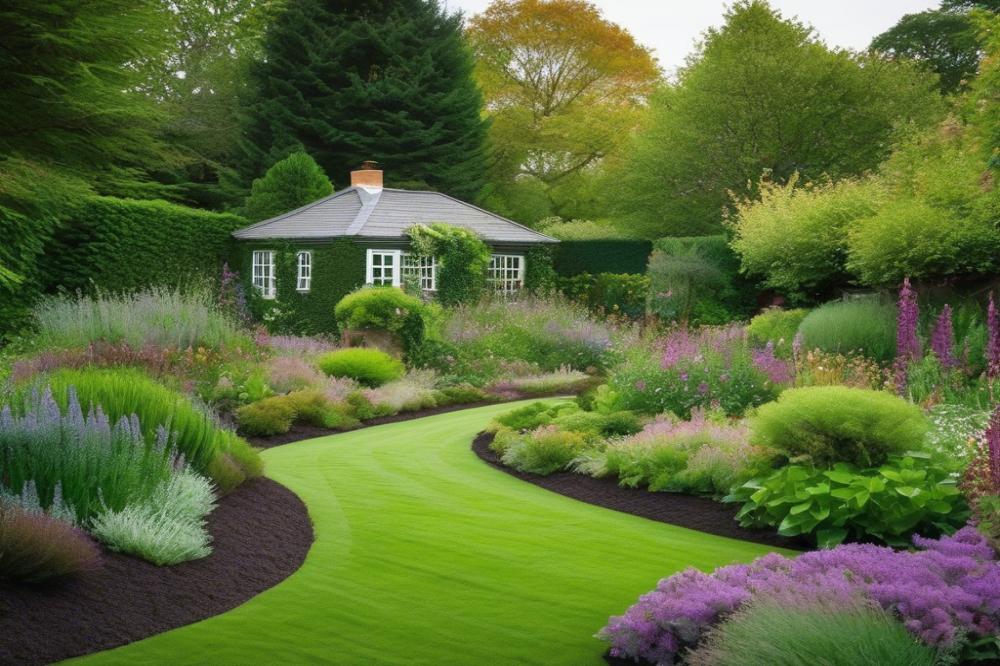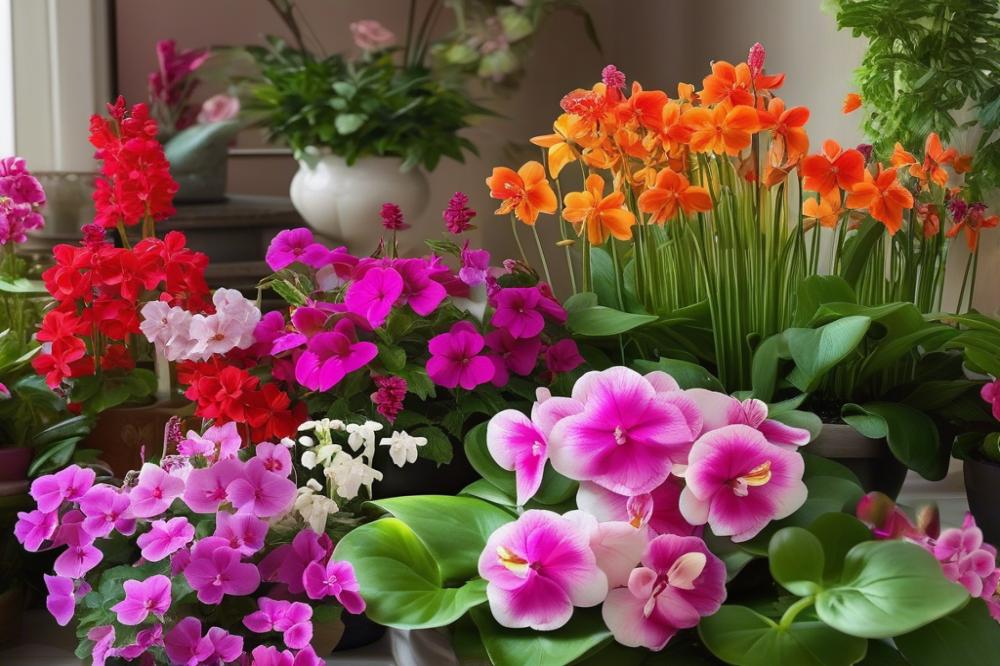Integrating ground covers in edible landscaping
edible landscaping combines beauty and functionality. It transforms traditional yards into vibrant spaces filled with lush, edible plants. This method encourages people to enjoy nature while harvesting fresh produce. ground covers play a crucial role in this type of design. They fill empty spaces while also supporting soil health and promoting biodiversity.
By using low-maintenance plants, gardeners can simplify their work. These plants help suppress weeds, which reduces the need for herbicides. Healthy soil is vital for strong growth. Plants that cover the ground can improve soil structure and increase moisture retention. This creates a thriving environment for other edible plants to flourish.
Embracing permaculture principles can enhance the benefits of edible landscaping. companion planting, where different species support each other, is a great strategy. For example, certain ground covers can attract pollinators or deter pests. This natural approach reduces the reliance on chemical solutions. Sustainable gardening practices ensure that ecosystems remain balanced and productive.
Implementing robust landscape design techniques can help maximize yields. Choosing the right combination of plants leads to a diverse garden that provides food and fosters wildlife. Incorporating ground covers makes the landscape not only functional but also visually appealing. Overall, understanding how to integrate these elements will lead to more fruitful and rewarding gardening experiences.
Understanding Ground Covers


Ground covers are low-growing plants. They spread out to cover the soil. These plants can create a lush carpet, offering a variety of benefits for any garden. Their characteristics often include fast growth and resilience. Many types are available, each suited for different purposes and environments.
In gardens focused on edible production, certain varieties stand out. For instance, sweet woodruff can add flavor and help suppress weeds. Creeping thyme serves a dual purpose: it offers culinary delights while attracting pollinators. Other options like strawberries can do more than just fill space; they provide tasty fruits as well. When selecting plants, look for those that match your local climate. This sets the stage for a thriving edible landscape.
Employing these plants fits well within sustainable gardening practices. They can significantly enhance soil health by reducing erosion and improving moisture retention. Biodiversity in the garden is crucial. Different plant species working together creates a balanced ecosystem. Think of companion planting as an added layer where plants support one another’s growth.
Many gardeners appreciate how low-maintenance these crops can be. Once established, many ground covers require minimal care. They provide shade for the soil, which can reduce the need for watering. This gardening tip is especially useful during dry seasons. Incorporating these options into landscape design can lead to stunning visuals as well. A beautiful garden doesn’t have to sacrifice function.
permaculture principles come into play when considering these plants. Ground covers help build healthy soil while providing food at the same time. Combining edible plants with ground covers promotes a dynamic and productive space. As the seasons change, the garden benefits from a variety of textures and colors. Doing so invites interest and joy to the space, making it enjoyable for both the gardener and visitors alike.
Selecting the Right Ground Covers


Choosing the perfect plants for your edible landscape requires careful thought. Climate plays a significant role in plant selection. Be aware of your USDA Plant Hardiness Zone when making decisions. Soil type also impacts what will thrive. A sandy soil differs in moisture retention compared to clay or loamy soil. Moreover, consider your overall garden design. Creating a cohesive look enhances the garden’s aesthetic appeal.
Many gardeners are now embracing permaculture principles. This method promotes biodiversity and soil health by using companion planting techniques. Selecting compatible plants not only boosts growth but also attracts beneficial insects. Edible ground covers can be especially useful in these designs.
Creeping thyme is a popular choice. This herb adds flavor to dishes while also resisting foot traffic. Strawberries are another great option. They produce sweet fruit and spread easily, creating a lovely carpet of greenery. Mint, known for its aromatic leaves, spreads well and can serve as an attractive border. However, be mindful, as mint can take over spaces if not managed properly.
Many edible plants provide both beauty and function. Consider how each plant fits within your landscape design. Low-maintenance varieties are ideal for busy gardeners. Always think about your local environment and what will flourish there. Using organic gardening practices promotes healthier plants and ecosystems.
Gardening tips often include advice on spacing and light requirements. Ensure that ground covers do not overshadow taller plants. Planning properly can help maximize your edible landscape’s potential. With thoughtful selection, your garden can become a productive oasis.
Incorporating Ground Covers with Other Plants


Using ground covers effectively can greatly benefit your edible landscaping. Companion planting is a method that allows different plants to support each other. This strategy enhances biodiversity and promotes soil health. For example, mixing herbs with vegetables can deter pests and attract beneficial insects.
Some plants thrive when they are grouped closely. Consider placing strawberries and thyme together. Thyme serves as a natural pest repellent while providing excellent ground coverage. This combination allows for a low-maintenance garden and boosts overall yields.
Another effective pairing is planting garlic alongside leafy greens. Garlic can deter harmful insects that might affect your salad crops. Both plants coexist well, allowing growers to maximize available space. Such plant combinations bring resilience and sustainability to the garden.
Permaculture principles play a crucial role in landscape design. The focus is on creating a self-sustaining ecosystem. This method encourages diverse plantings to improve overall garden health. Incorporating legumes can enhance soil nitrogen levels while being excellent companions for peppers or tomatoes.
Consider adding flowers into your food garden. Marigolds, for instance, can repel nematodes and attract pollinators. Mixing these edible plants with vibrant blooms can create a visually appealing and functional space. Enhancing your landscape with various species supports healthy growth and sustainable gardening practices.
When planning your garden layout, think about vertical growth. Climbers can also benefit from ground-hugging plants. For example, beans grow well when supported by corn, while benefiting from the shade of larger plants. This layered approach enhances biodiversity and yields.
Remember that successful gardening requires some trial and error. Keep track of what works well together and adjust your combinations as needed. Each plant has its unique needs, so observing their interactions is essential. With time and attention, your edible landscape can flourish.
Ground Covers and Soil Health
Ground covers play a significant role in enhancing soil health and structure. These plants create a protective layer over the soil, reducing compaction and improving aeration. This is essential for root development and the overall vitality of edible plants.
Moisture retention is another important benefit. When you cover the ground with plants, the soil is shielded from direct sunlight and heat. This results in less evaporation, helping to keep the soil damp. Fluctuating moisture levels can stress plants, but ground covers help mitigate this risk.
Erosion control is critical, especially in sloped landscapes. Their roots bind the soil together, preventing it from washing away during heavy rains. This contributes to a healthier ecosystem and preserves valuable nutrients in your garden.
Organic gardening practices bolster soil health further. Implementing methods like composting adds essential nutrients back into the ground. Permaculture principles promote a natural balance, encouraging biodiversity that supports a thriving environment.
Companion planting is a great strategy to use alongside ground covers. By pairing plants that benefit one another, gardeners can create a diverse landscape. This not only optimizes space but can also deter pests and attract beneficial insects.
Low-maintenance practices are appealing for busy gardeners. Choosing hardy ground covers cuts down on weeding and watering, allowing time for other gardening tips. Sustainable gardening methods, like mulching with organic materials, reinforce the positive effects of ground cover plants.
Moreover, incorporating these plants into your landscape design can enhance both function and beauty. They provide visual interest while performing critical ecological roles. Emphasizing a blend of aesthetic appeal and practical benefits makes your garden environment richer.
Low-Maintenance Ground Cover Options
Busy gardeners appreciate low-maintenance ground cover alternatives. They require less time and effort compared to traditional landscaping. This makes them perfect for those balancing jobs, family, and hobbies. These hardy plants can also enhance soil health and promote biodiversity in your garden.
When choosing ground covers, consider using plants that thrive in your local climate. Creeping thyme serves as an excellent edible option, bringing both flavor and beauty. Similarly, strawberry plants provide delicious fruits while forming a lush carpet. These choices offer both aesthetic appeal and practical benefits in permaculture and sustainable gardening.
Benefits for Busy Gardeners
Thrive with minimal care, many low-maintenance options require little watering or fertilization. Once established, they can withstand pests and diseases better than more delicate varieties. For those practicing organic gardening, this is particularly advantageous. Healthy soil supports robust plants, reducing the need for synthetic treatments.
Using companion planting techniques can also enhance your landscape design. For example, mixing different herbs or flowers with edible plants can improve growth and deter pests. This boosts both the productivity of your garden and reduces labor. As a result, you can enjoy the fruits of your labor without excessive hard work.
Tips for Maintaining Your Plants
Start strong by planting at the right time of year. Most ground cover plants have a preferred season for planting to ensure robust growth. Regularly check for weeds that might compete for resources. Mulching can help suppress unwanted invaders, making garden maintenance even easier.
Remember to water deeply but infrequently. This encourages deep root growth, making your plants more drought-resistant. Observing your plants for signs of stress can inform you about their needs. By keeping an eye on them, you can catch any issues early and address them quickly.
Incorporating low-maintenance ground covers into your edible landscaping not only simplifies your gardening routine. It promotes a healthy ecosystem. A diverse selection of plants can boost overall garden health while providing you with tasty rewards.
Sustainable Gardening Practices
Integrating ground covers into permaculture principles enhances garden sustainability. These plants can fill gaps in your garden, serving a variety of purposes. They help keep soil healthy by preventing erosion and retaining moisture. Utilizing these plants in companion planting can create supportive environments for edible plants. This method not only conserves resources but also promotes a thriving ecosystem.
Biodiversity plays an essential role in healthy gardens. Adding different ground covers increases the variety of plants, attracting beneficial insects and pollinators. Wildflowers, clover, and other native species can dramatically enhance your landscape while supporting local wildlife. The presence of diverse vegetation fosters a balanced ecosystem where pests are naturally controlled.
Long-term advantages of thoughtful landscape design include improved soil fertility. Ground covers contribute organic matter to the soil as they grow and decompose. This natural process boosts soil health, leading to better nutrient retention. Furthermore, low-maintenance plants mean less labor for you. Less time spent on upkeep translates to more time enjoying your garden.
When considering sustainable gardening, remember to choose plants that support each other. Certain ground covers can deter weeds and reduce the need for chemical treatments. Organic gardening encourages the use of natural solutions to enhance plant growth. These strategies align perfectly with the broader goals of permaculture, focusing on harmony in your outdoor space.
Here are some gardening tips to start with: select plants that thrive in your local climate. Investigate which species provide the best benefits in your area. Pay attention to how they interact with other plants. The right mix can lead to a beautiful, edible landscape that requires minimal effort.
Gardening Tips for Successful Ground Cover Integration
Practical strategies can make a significant difference when integrating ground covers into your edible landscape. First, consider the specific needs of your chosen plants. Look for low-maintenance varieties that thrive in your local climate. Selecting plants that complement each other enhances biodiversity. This method is known as companion planting.
Soil health is crucial for strong growth, so testing your soil before planting is a good idea. A healthy mix of nutrients supports the growth of both edible plants and ground covers. Adding organic compost can dramatically improve your soil’s quality. When planting, pay attention to spacing to allow for air circulation and light penetration.
Seasonal care routines help keep plants healthy. Regularly check the area for weeds, as they can compete with your edible plants. Mulching around ground covers can prevent weed growth and retain moisture. In summer, ensure that plants receive enough water, especially during dry periods.
Pest management is an essential part of sustainable gardening. Utilizing natural predators like ladybugs can reduce the need for chemical pesticides. Create a habitat for these helpful insects by incorporating diverse plant species. Additionally, monitor your plants for any signs of infestation. Quick action can prevent larger problems down the line.
For effective implementation, gather the right tools. A good trowel, pruners, and gloves can make maintenance easier. You might also want to keep a notebook to track your gardening progress. This practice helps with understanding what works best in your landscape design.
There are many resources available. Local gardening clubs often provide helpful advice. Online forums can also connect you with experienced gardeners for real-life tips. Engaging with these communities can enrich your gardening experience and increase your knowledge of permaculture practices.
Final Thoughts
Incorporating ground covers into edible landscaping unlocks a wealth of benefits. These plants can suppress weeds, improve soil health, and attract pollinators. They also offer visual appeal, creating a lush environment that enhances the overall look of your garden. With their diverse forms, these plants can fit well in any landscape design.
Exploring various species provides opportunities for creativity and experimentation. Companion planting is another vital aspect to consider. Pairing different plants can lead to improved growth and pest control. Plus, practices like permaculture promote a sustainable approach, enriching your garden ecosystem.
Take the time to research and select plants that thrive in your local conditions. A rich variety will not only foster a healthier environment but also create a stunning space for you to enjoy. Embrace the journey of designing your edible landscape. A thriving garden awaits those ready to explore the possibilities.



